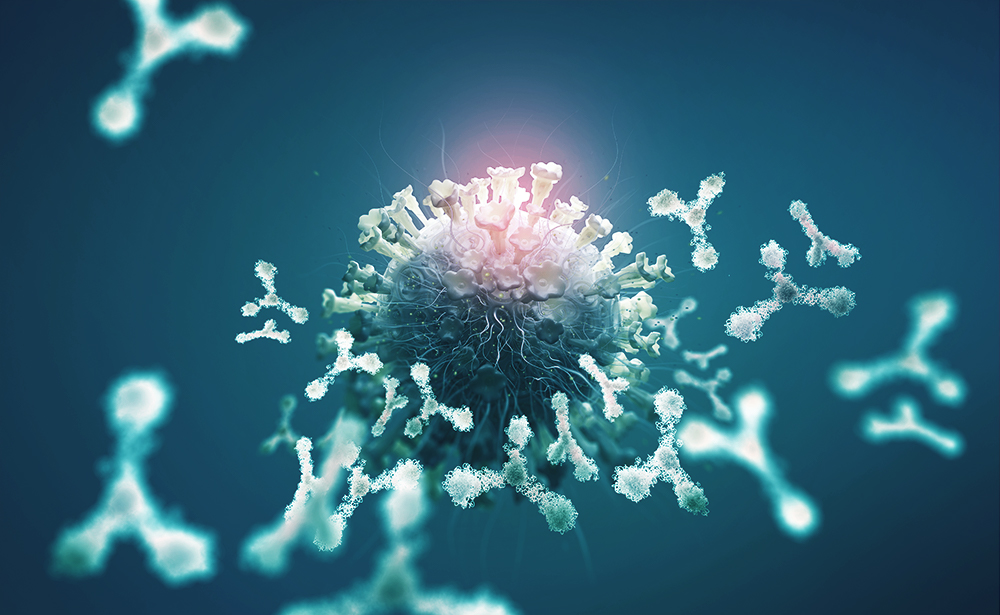Insect cell expression and purification of recombinant SARS-COV-2 spike proteins that demonstrate ACE2 binding
Paper of the Month - #PureCube Ni-INDIGO Agarose
Introduction
Our “Paper of the Month” series shows examples of applications and innovative methods with which Cube Biotech products are already supporting or advancing scientific research.
We want to introduce you to a paper by the research team of Struble et. al. from the Eppley Institute for Research in Cancer and Allied Diseases in Nebraska. They focused on developing and optimizing a robust SARS-CoV-2 spike protein expression and purification protocol using insect cells.
Research output
Four recombinant SARS-CoV-2 spike protein constructs based on the original SARS-CoV-2 sequence were studied using a baculovirus expression system: the spike protein receptor-binding domain (S-RBD) fused with enhanced green fluorescent protein (eGFP), the full-length spike ectodomain (S-Ecto) fused with eGFP, the S-Ecto with six stabilizing proline mutations and a foldon domain (S-Ecto-HexaPro(+F)), and the S-Ecto with the same six proline mutations but without the foldon domain (S-Ecto-HexaPro(-F)).
Protein expression was performed in two insect cell lines: Spodoptera frugiperda (Sf9) and Trichoplusia ni (Tni). The study compared the protein yields from these insect cell lines with those reported in previous studies using mammalian cells. The results showed that the Tni cells generally produced higher protein yields than Sf9 cells, with S-Ecto-HexaPro(+F) showing a 3.7-fold increase in yield in Tni cells compared to Sf9 cells. The study also demonstrated that the spike proteins produced in insect cells were glycosylated and functionally active, retaining the ability to bind to the human ACE2 receptor.
To confirm the functionality of the constructs, the eGFP-fused spike ectodomain (S-Ecto-eGFP) was tested for its ability to bind to surface ACE2 receptors on lung epithelial cells. Flow cytometry analysis demonstrated that the binding of S-Ecto-eGFP to ACE2 receptors could be significantly reduced through receptor manipulation, either by blocking the ACE2 receptor or downregulating its expression. This confirms the biological activity and potential therapeutic application of the constructs. Additionally, the novel S-Ecto-eGFP construct was successfully used in studies on bromelain’s effect on reducing SARS-CoV-2 infection in VeroE6 cells.
To confirm the functionality of the constructs, the eGFP-fused spike ectodomain (S-Ecto-eGFP) was tested for its ability to bind to surface ACE2 receptors on lung epithelial cells. Flow cytometry analysis demonstrated that the binding of S-Ecto-eGFP to ACE2 receptors could be significantly reduced through receptor manipulation, either by blocking the ACE2 receptor or downregulating its expression. This confirms the biological activity and potential therapeutic application of the constructs. Additionally, the novel S-Ecto-eGFP construct was successfully used in studies on bromelain’s effect on reducing SARS-CoV-2 infection in VeroE6 cells.
Results
The results indicate that insect cell expression systems are effective for the rapid and cost-efficient production of functional spike proteins. This offers a promising approach for the development of vaccines and therapeutic agents targeting SARS-CoV-2. The study emphasizes the importance of the six proline mutations, particularly in constructs like S-Ecto-HexaPro(+F), which enhanced protein stability and yield. Additionally, the research highlights the relevance of these constructs in binding studies and drug testing. The successful demonstration of these constructs in binding assays paves the way for their further use in COVID-19 research, specifically in therapeutic development and immunological studies.
Purification steps are performed with the Ni-INDIGO agarose resin
“We tested three types of immobilized metal affinity chromatography (IMAC) resins: Ni-NTA Agarose (Qiagen), Ni Sepharose excel (Cytiva), INDIGO-Ni agarose resin. We found that the cell media leached the nickel ions from the Ni-NTA Agarose resin, significantly reducing the final protein yield. Excel and INDIGO-Ni are both chemical resistant resins, and both showed no observable metal ion leaching. We decided to proceed with our experiments using the INDIGO-Ni resin, as the Excel resin co-purified more impurities (not shown).”



